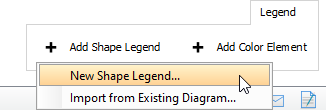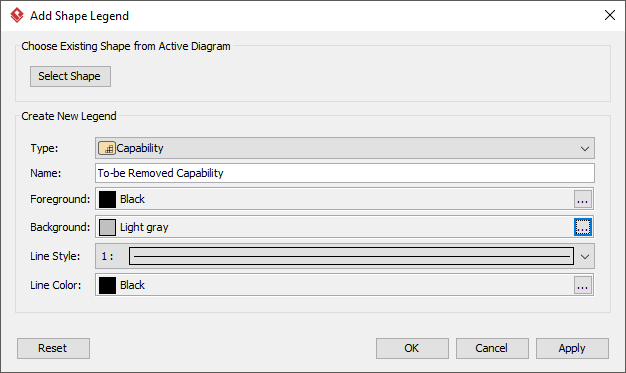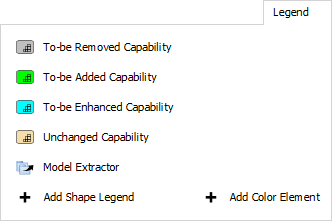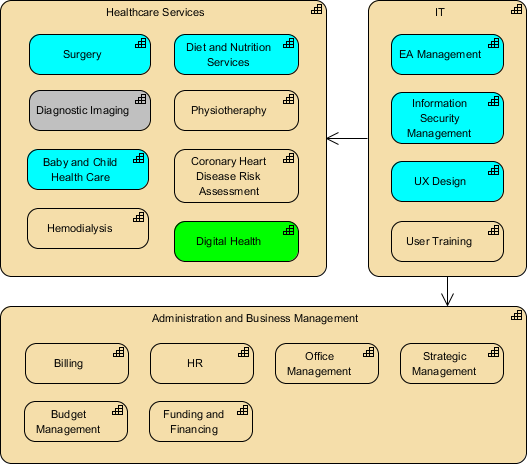Visual modeling is meant to be easy-to-understand and suitable to be used as visual communication means, both for technical and non-technical people. All of the open Visual Modeling languages such as, UML, BPMN, or ArchiMate aim to make communications easier for all stakeholders from different disciplines and domains. However, in order for visual models to represent a wide range of problems in the complex world, each of these modeling languages, typically consists of huge collection of shapes and notations.
Perhaps, we can use 20% of the notations to represent 80% of problems, but we need to include all those stuff in the reference manual or tool palette for "just in case" we need them! Visual Paradigm introduces a visual modelling tool called Shape Legend to solve these problems.
Benefits of Shape Legend
A Shape Legend is formed by a subset of shapes of a particular type of diagram for the benefits of:
- Annotate a shape with an element title for non-technical people or stakeholders
- Add additional dimension to elements' definition (e.g. Different urgency of BPMN tasks represented by different colour code)
- Have the legend appear in exported images for annotation purposes
- Mass update of shapes' formats for shapes in same type (i.e. created from same legend item)
- Stay focused by constructing a diagram from a trimmed down list of shape types (Forget about the palette!)
- Improve the correctness of design by restricting team members to create diagrams from a given list of shape types
- Flexibly add and remove elements to and from Shape Legend
- Make a diagram more readable for non-technical people or from other discipline
Note that:
- Visual Paradigm will show only the connectable set of links for two different shapes through the Resource Catalog.
- Visual Paradigm will show only the subset of shapes in the Shape Legend through the Resource Catalog.
Hands on
In this section, we will take ArchiMate® 3 Capability as an example in demonstrating the use of Shape Legend in an ArchiMate diagram. While ArchiMate Capability is a primitive shape type, for the sake of capability map development, you may want to define types like "To-be Removed Capability", "To-be Added Capability", "To-be Enhanced Capability" and "Unchanged Capability". While there are multiple methods to achieve this, in this section, we will show you the use of Shape Legend in achieving this.
Shape Legend is a visual modelling tool grouped as a part of the Legend feature. To use Shape Legend, walk through the steps below.
- Right-click on the background of the diagram where you want to apply Shape Legend, and then select Presentation Options > Show Legends from the popup menu. You should see the Legend pane appear at the bottom right of the diagram.
- Click on Add Shape Legend and select New Shape Legend from the drop-down menu.

- Select the type of shape that can be drawn on this diagram. Name it and configure its appearance.

- Click OK to confirm.
- Repeatedly add the other shape types into Shape Legend.

- To create shapes from Shape Legend is like creating shapes via the palette in that all of the commands you can use on a palette are viable in Shape Legend. Here are some typical commands:
- Drag on a shape type in Shape Legend and drop it into to create a shape
- Click on a shape type in Shape Legend and click once on the diagram to create it
- Double-click on a shape type in Shape Legend to lock it, and click multiple times on the diagram to create multiple instances of that shape
The figure below shows an example of Capability Map drawn using Shape Legend.



